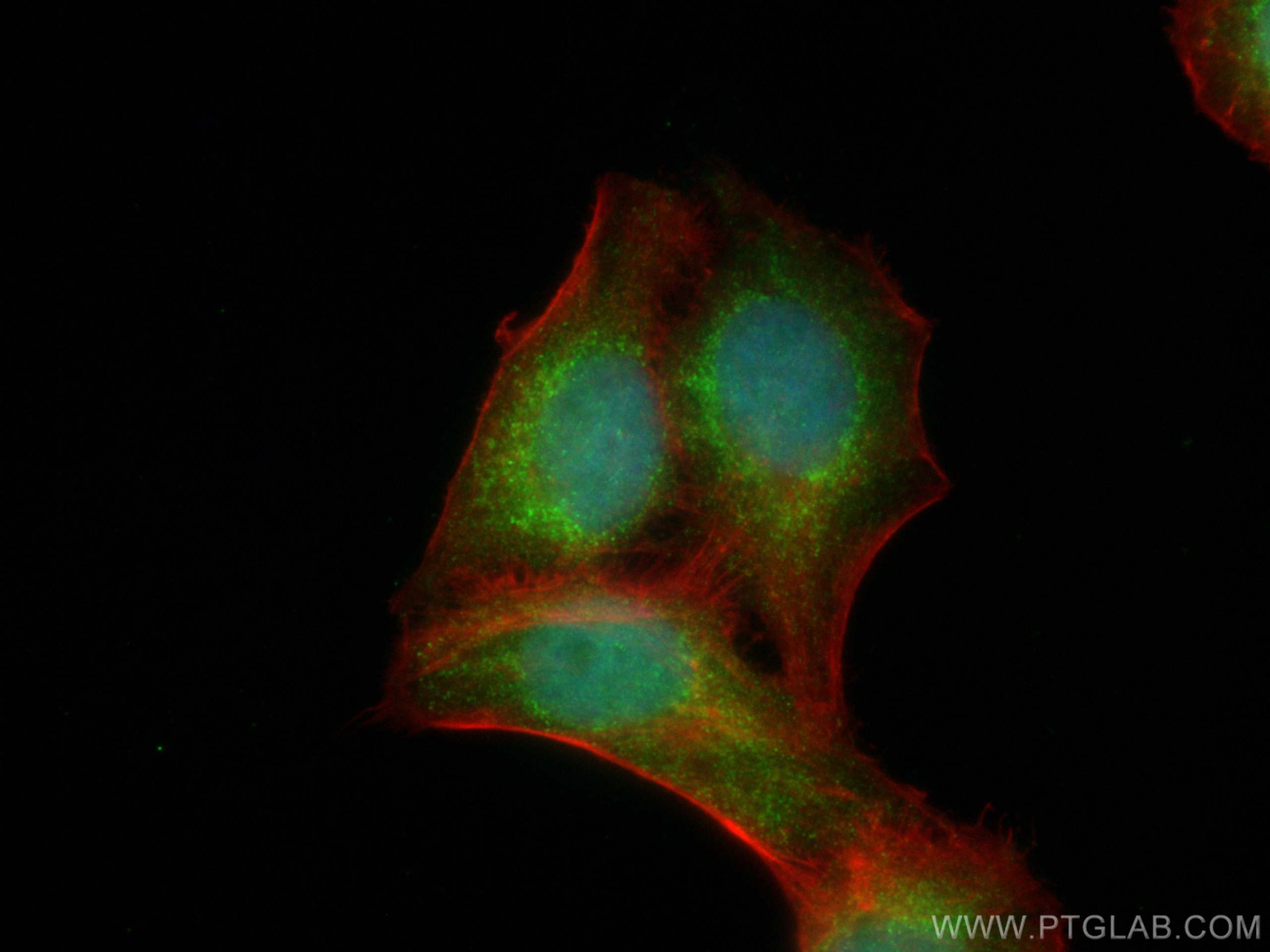Validation Data Gallery
Tested Applications
| Positive IF/ICC detected in | HaCaT cells |
Recommended dilution
| Application | Dilution |
|---|---|
| Immunofluorescence (IF)/ICC | IF/ICC : 1:50-1:500 |
| It is recommended that this reagent should be titrated in each testing system to obtain optimal results. | |
| Sample-dependent, Check data in validation data gallery. | |
Product Information
CL488-68097 targets PRAME in IF/ICC applications and shows reactivity with Human, mouse, rat samples.
| Tested Reactivity | Human, mouse, rat |
| Host / Isotype | Mouse / IgG2b |
| Class | Monoclonal |
| Type | Antibody |
| Immunogen | PRAME fusion protein Ag1906 相同性解析による交差性が予測される生物種 |
| Full Name | preferentially expressed antigen in melanoma |
| Calculated molecular weight | 509 aa, 58 kDa |
| Observed molecular weight | 50 kDa |
| GenBank accession number | BC014074 |
| Gene Symbol | PRAME |
| Gene ID (NCBI) | 23532 |
| RRID | AB_3084399 |
| Conjugate | CoraLite® Plus 488 Fluorescent Dye |
| Excitation/Emission maxima wavelengths | 493 nm / 522 nm |
| Form | Liquid |
| Purification Method | Protein A purification |
| UNIPROT ID | P78395 |
| Storage Buffer | PBS with 50% glycerol, 0.05% Proclin300, 0.5% BSA , pH 7.3 |
| Storage Conditions | Store at -20°C. Avoid exposure to light. Stable for one year after shipment. Aliquoting is unnecessary for -20oC storage. |
Background Information
The PRAME (preferentially expressed antigen of melanoma) gene was previously shown to be overexpressed in ovarian/primary peritoneal serous carcinoma compared with malignant mesothelioma using gene expression arrays. It is considered a melanocyte differentiation antigen which is overexpressed in both solid and hematologic tumors. In normal tissue, a very low level of PRAME expression is found in normal testis, adrenals, ovary and endometrium. A high level of PRAME expression has been reported for several solid tumors, including ovarian cancer, breast cancer, lung cancer and melanomas, medulloblastoma, sarcomas, head and neck cancers, neuroblastoma, renal cancer, and Wilms'tumor. As a nuclear transcriptional repressor protein, PRAME binds to retinoic acid receptor a, thereby inhibiting retinoic acid induced differentiation, growth arrest, and apoptosis.
Protocols
| Product Specific Protocols | |
|---|---|
| IF protocol for CL Plus 488 PRAME antibody CL488-68097 | Download protocol |
| Standard Protocols | |
|---|---|
| Click here to view our Standard Protocols |
